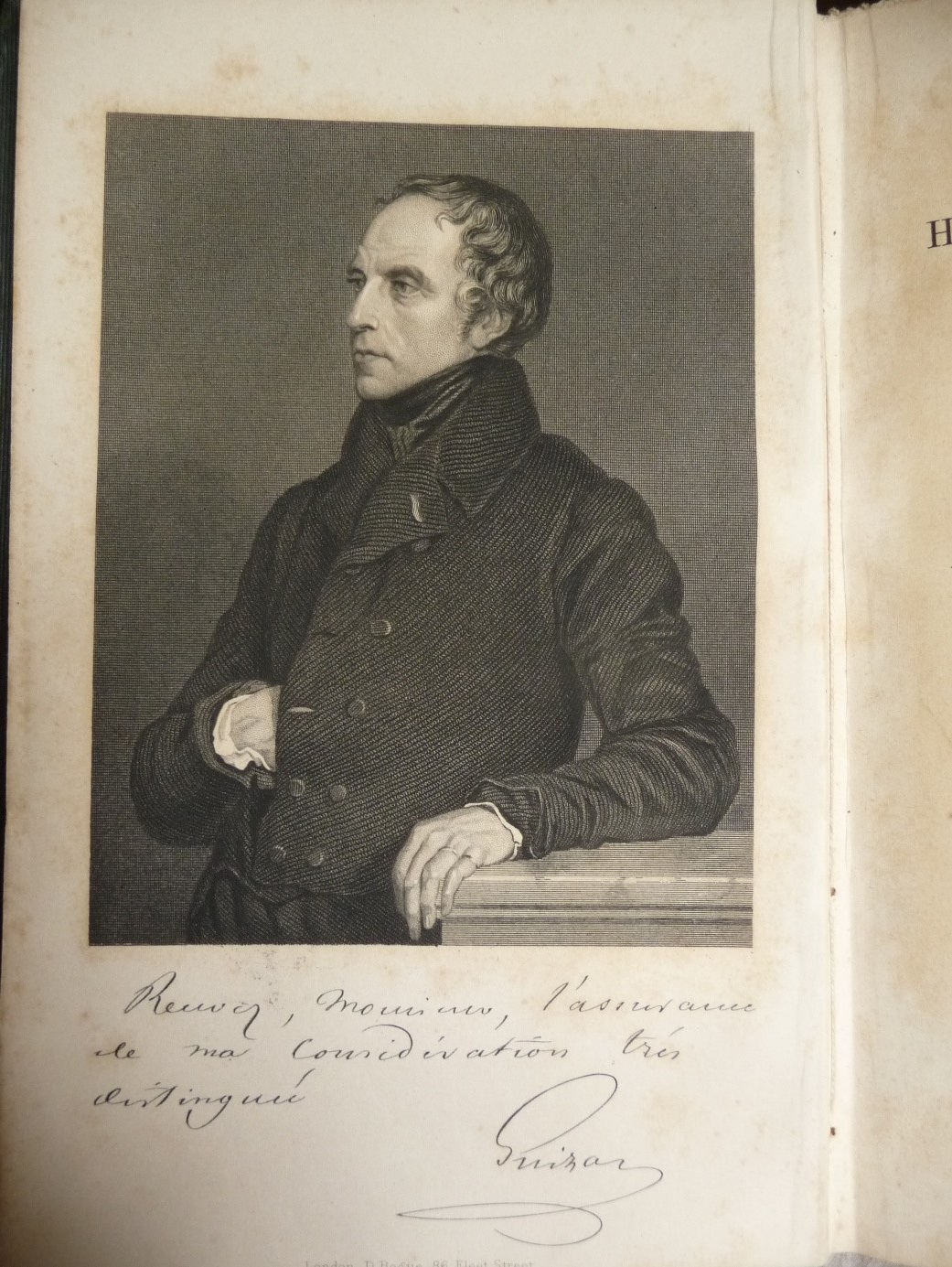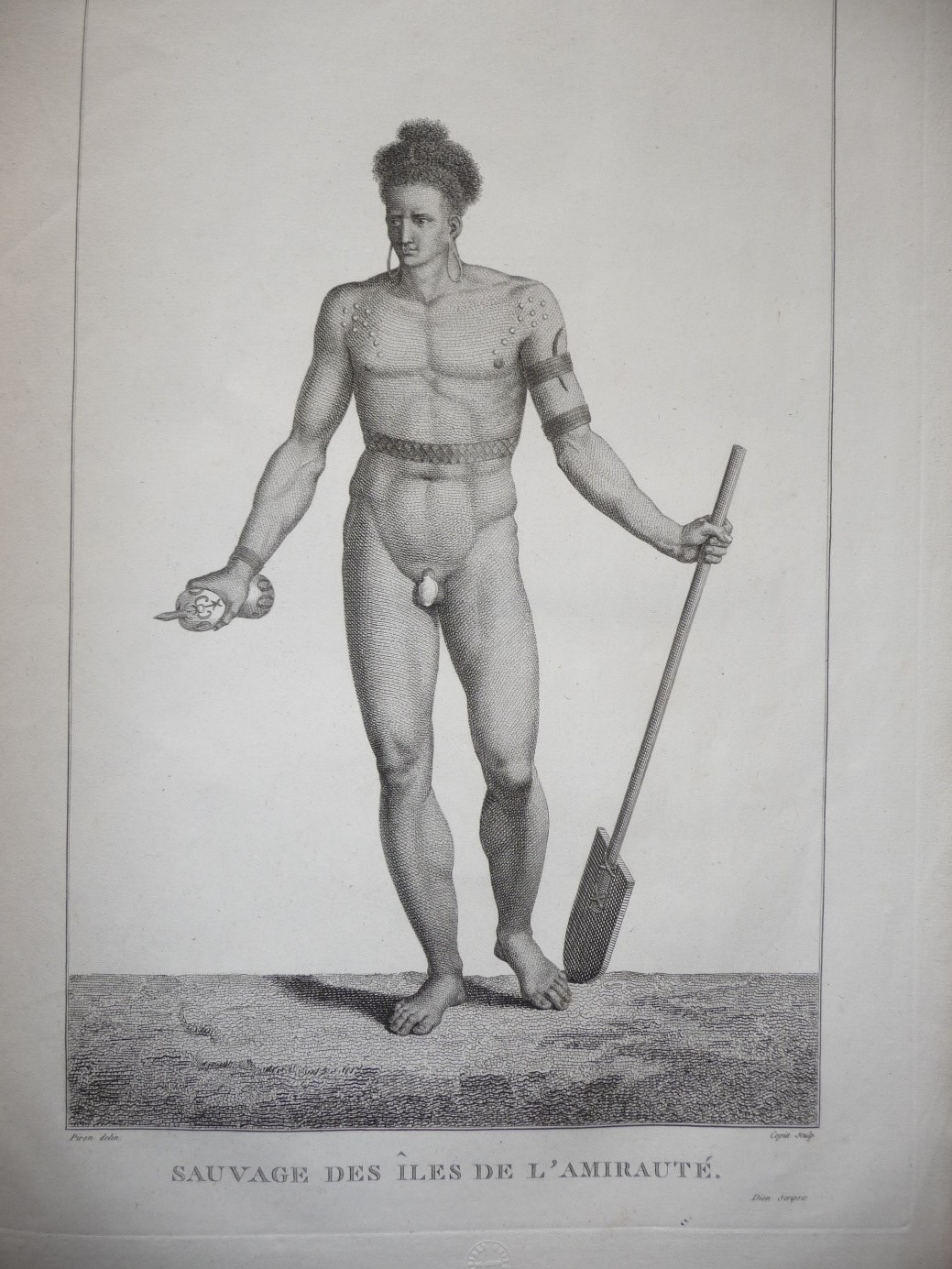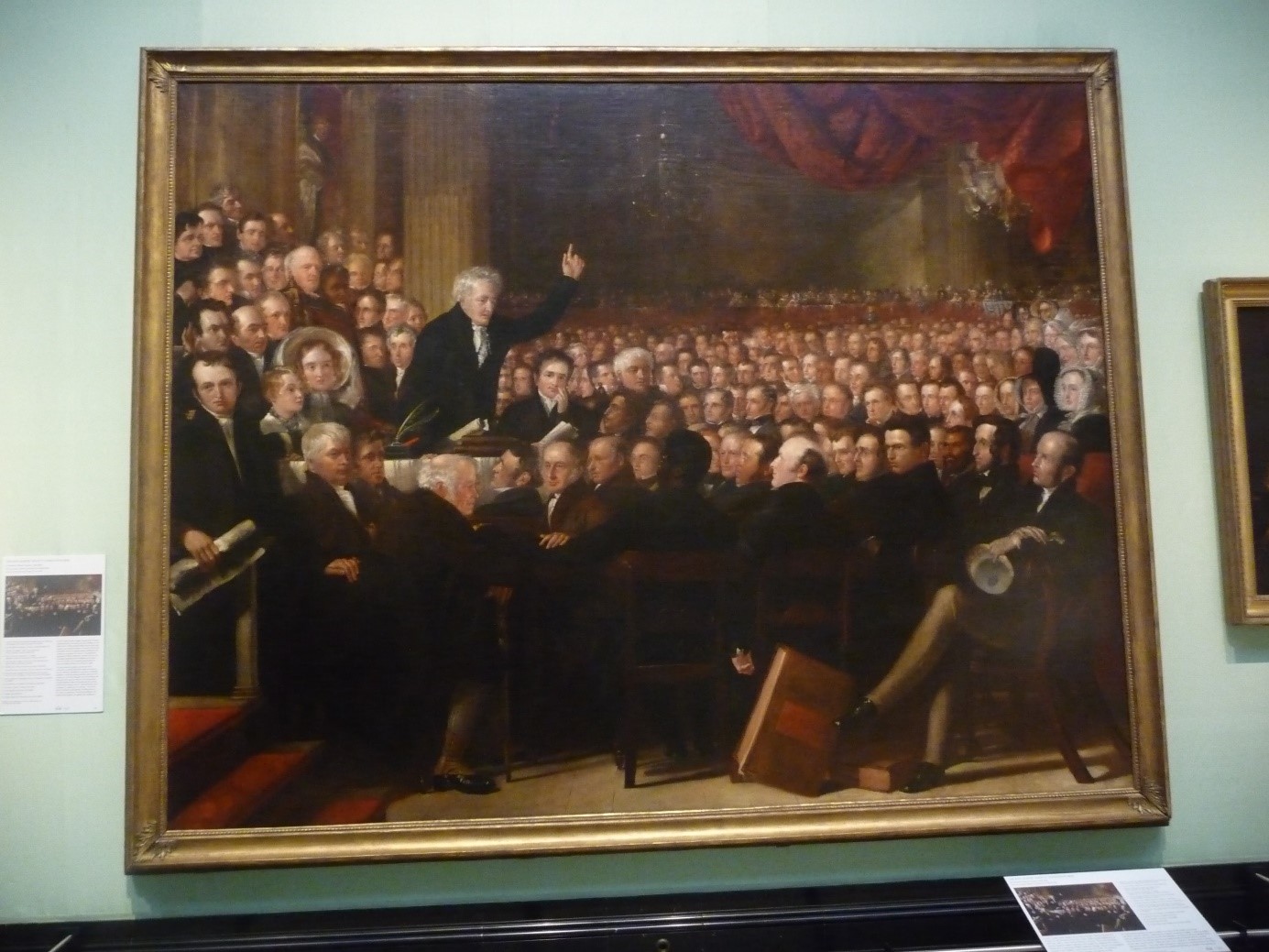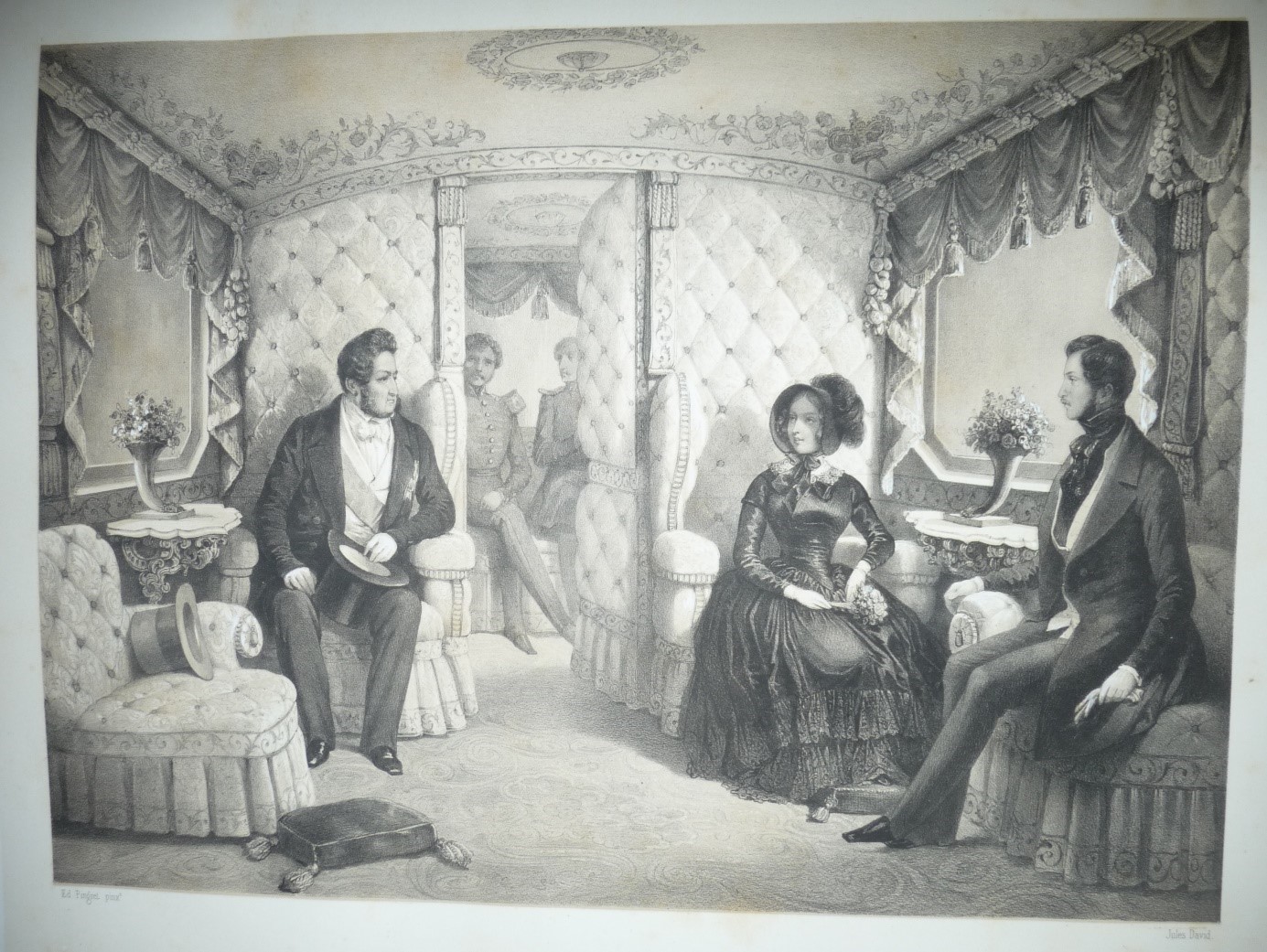Article written by Jean Bergeret (2020)
Historical context
« Neither economic factors nor slave resistance brought about the abolition of French colonial slavery in 1848. Rather, emancipation was realised thanks to the development by French abolitionists of an anti-slavery culture during the July Monarchy.
Gradualist and prudent during the 1830s, French anti-slavery became progressively more immediatist in the 1840s,and was able to implement the of France’s 250,000 colonial slaves as soon as the Révolution of 1848 overthrew the immobile and oppressive Orleanist monarchy »
Text issued from :
Jennings Lawrence C. Le second mouvement pour l’abolition de l’esclavage colonial français. In: Outre-mers, tome 89, n°336-337, 2e semestre 2002. traites et esclavages : vieux problèmes, nouvelles perspectives ? ,pp. 177-191.

Illustration from Guizot, The history of Civilization, vol. 1, London, 1846
« Before the Revolution broke out in France, both England and France were engaged in the slave trade. At the beginning of the 19th century, England, which had become abolitionist, abolished the slave trade in 1807, then slavery in 1833. In France, the evolution of mentalities was slower; if slavery had been abolished by the Convention in 1794 in France, Bonaparte reestablished it in 1802, as well as implicitly trafficked it. Louis XVIII prohibited it in 1818 but remained in favor of progressive measures; as a result, French shipowners continue to trade. Several abolitionist laws will be needed to deter this illegal traffic.

Commandant Labillardière, Atlas to serve in the relation of the journey in search of La Pérouse,, Paris, Year VIII of the Républic.
The legend gives a rather negative perception of a man from the Admiralty Islands
England, champion of the abolition of the slave trade, is leading international action to purge the coasts of Africa from slave traffickers. It signs conventions with various countries and uses the right of visit, to oblige the ships to respect them. France is also gradually organizing surveillance of the coasts of Africa by his navy.
Shortly after Louis-Philippe’s advent, a bilateral agreement was signed with England to coordinate surveillance of the coasts of Africa by exercising reciprocal visitation rights (1831 and 1833). Fran-ce is the only country to participate with its navy in the repression of slave trade. British ships are deployed from Sierra Leone to control the slave trade centers in Benin and the Gulf of Guinea. French ships are based in Saint-Louis of Senegal and Gorée. Mixed commissions are responsible for the final judgment of slave traders seized by repression cruises. This concerted action led to a significant decline in trafficking from 1840.
But the France of Louis-Philippe, who has not yet abolished slavery, remains above all concerned not to appear in the wake of England. A “visitation crisis” soon agitated political life. National pride is fueled by a power struggle between Adolphe Thiers, dismissed from Foreign Affairs because of his adventurous policy against England, and François Guizot, his replacement in the ministry. When Guizot attempts to update the convention with England, in December 1841, months of parliamentary debates and numerous articles in the press, orchestrated by Thiers, prevent its ratification.
The visit of the French ships by the English navy, arouses in France a visceral antagonism against England, reinforced by various business mounted in hairpin, such the seizure by the English, in 1839, of the Senegambia, which transported not captives but workers hired for Cayenne.
In reality, the two navies no longer seize black captives on French ships because the French slave trade no longer exists. The visiting rights which inflamed French public opinion no longer had any reason to exist in 1844. The slave trade took more complex routes, under other flags. »
Text by Luce-Marie Albigès, April 2007. History of the image website.
In France
A Society for the Abolition of Slavery was created in 1834. It was dissolved in 1848 at the time of the abolition of slavery in France. The founding members are friends of Guizot: Victor de Broglie, Charles de Rémusat, Agénor de Gasparin, etc. Guizot does not belong to it, as it does not belong to the associate members, it seems.
But on February 13, 1838, the Chamber of Deputies, after numerous unsuccessful attempts on the part of the abolitionists, discussed a new proposal and Guizot was the chairman of the commission charged with examining it.
Charles de Rémusat presented the commission’s report to the Chamber of Deputies on June 18, 1838. But instead of abolition only in favor of unborn children, which would lead to a slow abolition and lead to “envious rivalries, the commission, after having recalled that there were 258,956 slaves in the French colonies, indicates that it wishes a mass emancipation, it however proposes to wait until 1840 to judge fully the British experience and indicates that while waiting it was advisable to vote on preparatory measures for emancipation (savings, redemption, religious education).
The king dissolved the chamber in 1839. The bill was unsuccessful.
First international congress in favor of the abolition of slavery
At this convention, attended François-André Isambert, member of the French Society for the abolition of slavery:
« When Mr. Isambert entered the room, accompanied by Mr. Dussailly and Mr. Hauré, members of the French Society, he came to take his place to the right of the chair reserved for the president. The French deputation was greeted with great acclaim. The same was true when the French Ambassador, Mr. Guizot, entered. Next to the French deputies was placed the Duchess of Sutherland, HRH the Duke of Sussex and Mr. O’Connel were greeted with thunderous applause. »

Haydon Benjamin Robert (1786-1846), The anti-slavery society Convention, 1840.
Oil on canvas, coll. National Gallery, London
The July Monarchy procrastinated for the abolition of slavery, despite multiple calls from French society. After the July Monarchy, it was promulgated by a provisional government made up of eleven people, five of whom were members of the French Society for the Abolition of Slavery: François Arago, Adolphe Crémieux, Alphonse de Lamartine, Louis Blanc and Alexandre Ledru-Rollin.
Rôle of Guizot
Guizot was against slavery.
« Guizot was part of the Society of Christian Morality, a society where there are many Protestants and to which belongs the flower of liberal opposition [who is for] philosophical and philanthropic vocation, at the forefront in the fight against the penalty of death in political matters and the slave trade, for the improvement of the penitentiary condition and for the emancipation of the Greeks – so many convictions to which Guizot will always remain attached… Guizot’s main contribution seems to have consisted of sustained efforts, when he was ambassador to Great Britain, to have an international treaty signed authorizing the boarding of vessels belonging to the participating nations in order to verify that they were not carrying human cargo.
During debates in the Chamber of Deputies in 1841, Guizot ardently defended the treaty to be signed between HM the King of the French and HM the Queen of the United Kingdom of Great Britain and Ireland, the two countries pledging to continued to ban … all trafficking of blacks in the colonies they own.
His negotiating and speaking skills paved the way for the abolition of slavery in the French colonies of 1848, for which Schœlcher was chiefly credited. François Guizot’s hope that his name will be associated with all those who fought for the abolition of slavery and the slave trade has so far been disappointed. ” »
Texte issued from the guizot.com website

Pingret, Trip of H.M. Louis-Philippe I to Windsor Castle. Paris, London, 1846
Coll. Val-Richer.
Louis-Philippe, Queen Victoria and Prince Albert in a wagon of the royal train.